stuck in gear manual transmission
A stuck gear in a manual transmission can be frustrating and dangerous, often caused by issues like faulty clutch mechanisms, worn synchronizers, or improper shifting techniques․
Understanding the Basics of Manual Transmissions
A manual transmission relies on a system of gears, levers, and hydraulic or cable-actuated components to transfer power from the engine to the wheels․ The driver uses the clutch pedal to disconnect the engine from the transmission and the gearshift to select the desired gear․ Proper synchronization between the clutch, gearshift, and accelerator is essential for smooth operation․ When the clutch is pressed, it disengages the engine, allowing the driver to shift gears without grinding․ Common issues like stuck gears often stem from improper shifting techniques, worn components, or hydraulic system failures․ Understanding these fundamental mechanics helps drivers identify and address problems effectively, ensuring smoother control and extending the transmission’s lifespan․
Why Manual Transmissions Can Get Stuck in Gear
Manual transmissions can become stuck in gear due to mechanical failures or improper driving habits․ Worn-out synchronizers, faulty clutch mechanisms, and damaged shift linkages are common culprits․ If the clutch doesn’t fully disengage, the transmission may not shift smoothly, causing gears to stick․ Additionally, high mileage and lack of maintenance can lead to wear on critical components like bearings and gear teeth․ Environmental factors, such as extreme temperatures, can also affect transmission performance․ Driver error, such as “riding the clutch” or not fully depressing it before shifting, can strain the system and lead to gears getting stuck․ These issues highlight the importance of regular maintenance and proper driving techniques to prevent transmission problems․
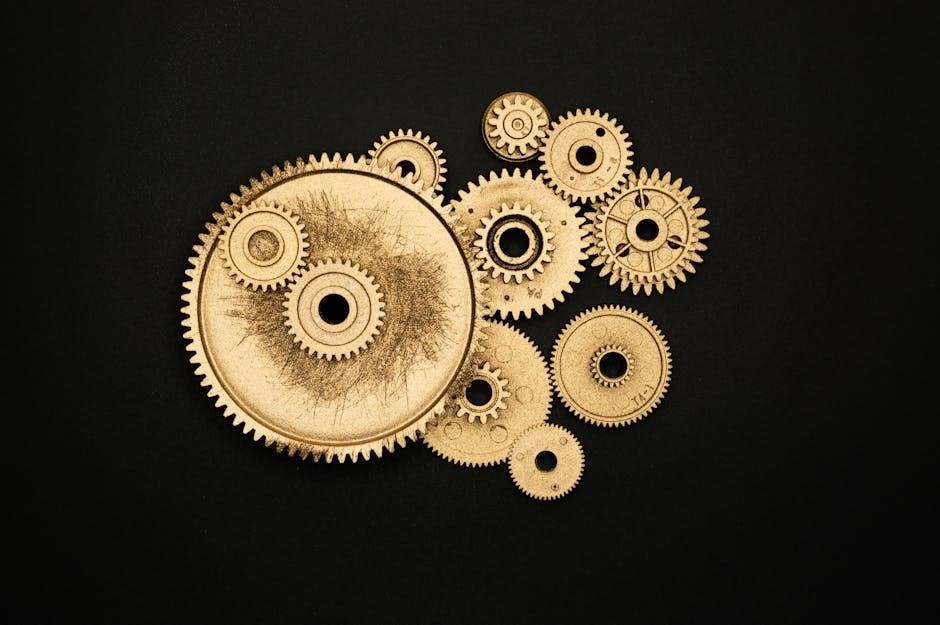
Common Causes of a Stuck Gear in Manual Transmission
Common causes include faulty clutch mechanisms, worn synchronizers, and shift linkage issues․ These problems often arise from high mileage, improper driving techniques, or lack of regular maintenance․
Faulty Clutch Mechanism
A faulty clutch mechanism is a common cause of a manual transmission getting stuck in gear․ The clutch is responsible for disengaging the engine from the transmission when shifting gears․ If the clutch fails to release properly, the gear cannot disengage, leaving the transmission stuck․ This issue can arise from worn or damaged clutch components, such as the master or slave cylinder, or a malfunctioning clutch pedal․ Symptoms include difficulty shifting gears or the gear refusing to move out of its current position․ In some cases, the clutch may partially release, causing the transmission to “hang” between gears․ If left unaddressed, this can lead to further damage to the transmission․ Regular inspection and maintenance of the clutch system are essential to prevent such issues․
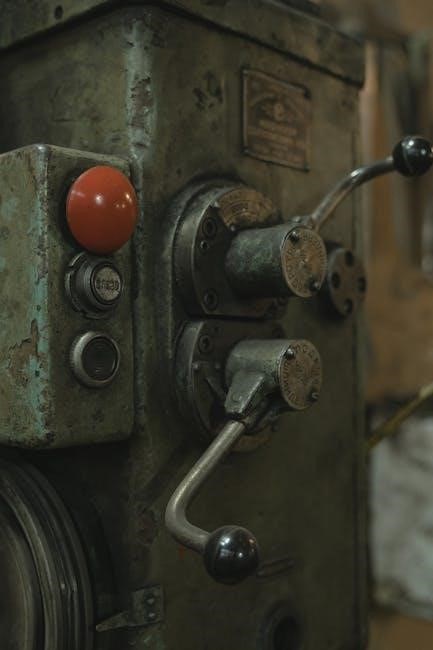
Worn or Damaged Synchronizers
Worn or damaged synchronizers are another common reason for a manual transmission getting stuck in gear․ Synchronizers are critical components that ensure smooth gear transitions by matching the speed of the gear to the shaft․ Over time, these components can wear out due to high mileage, aggressive driving, or lack of proper maintenance․ When synchronizers fail, gears may not engage properly, causing the transmission to hesitate or refuse to shift․ Symptoms include grinding noises, difficulty shifting into specific gears, or the gear refusing to disengage․ If left unrepaired, worn synchronizers can lead to further damage to the transmission, requiring costly repairs․ Regular inspection and replacement of worn synchronizers are essential to prevent such issues from arising․
Issues with the Shift Linkage
Issues with the shift linkage can also cause a manual transmission to become stuck in gear․ The shift linkage connects the gearshift to the transmission, translating the driver’s movements into gear changes․ If the linkage becomes loose, misaligned, or damaged, it can fail to engage or disengage gears properly․ Common symptoms include a loose gearshift, grinding noises, or gears that refuse to shift․ Over time, wear and tear on the linkage components, such as the bushings or rods, can exacerbate the problem․ Environmental factors like rust or corrosion can also contribute to linkage failure․ Addressing shift linkage issues promptly is crucial to avoid further damage to the transmission and ensure smooth gear changes․ Regular inspection and maintenance of the linkage can help prevent these problems from occurring․
Hydraulic System Problems
Hydraulic system issues can also lead to a manual transmission becoming stuck in gear․ The hydraulic system, which includes the master and slave cylinders, plays a crucial role in engaging and disengaging the clutch․ If there is a leak in the hydraulic lines or the cylinders fail, the clutch may not release properly, causing the transmission to stay in gear․ Air in the hydraulic system can also disrupt the clutch’s operation, leading to similar problems․ Symptoms include a spongy clutch pedal or difficulty shifting gears․ addressing hydraulic system issues promptly is essential to prevent further damage to the transmission․ Regular maintenance, such as checking fluid levels and inspecting for leaks, can help avoid these problems․
High Mileage Wear and Tear
High mileage wear and tear is a common cause of a manual transmission getting stuck in gear․ Over time, components like synchronizers, shift linkage, and bearings can degrade, leading to poor engagement between gears․ Worn synchronizers fail to properly mesh gears, causing the transmission to hesitate or lock in place․ Similarly, worn-out shift linkage components can misalign gears, making it difficult to shift smoothly․ Regular wear on the clutch throwout bearing can also contribute to stuck gears․ While high mileage is unavoidable, proper maintenance can delay these issues․ Replacing worn parts and ensuring the transmission is well-lubricated can help prevent gears from sticking due to wear and tear․ Addressing these problems early is crucial to maintaining smooth gear operation․
Incorrect Driver Techniques
Incorrect driver techniques can significantly contribute to a manual transmission getting stuck in gear․ Common mistakes include “riding the clutch,” where the driver keeps the clutch partially engaged, causing excessive wear on the clutch and related components․ This can lead to the clutch failing to disengage properly, making it difficult to shift gears․ Another issue is “butter shifting,” where the driver shifts gears without fully depressing the clutch, which can cause gears to grind and potentially lock in place․ Additionally, aggressive or abrupt shifting, especially without matching engine speed to gear selection, can overburden the transmission’s synchronizers, leading to stuck gears․ Proper shifting techniques are essential to prevent these issues, emphasizing the importance of driver education and awareness․
Lack of Proper Maintenance
Lack of proper maintenance is a leading cause of manual transmissions getting stuck in gear․ Neglecting to replace transmission fluid or failing to inspect and clean components can lead to worn-out parts․ Dirty or degraded fluid can cause gears to stick due to insufficient lubrication․ Additionally, ignoring worn-out bearings or synchronizers can result in gears locking in place․ Regular maintenance, such as fluid changes and component inspections, is crucial to prevent these issues․ Over time, neglect can lead to costly repairs, including the need for a full transmission rebuild or replacement․ Proper upkeep ensures smooth gear operation and extends the lifespan of the transmission, avoiding the inconvenience and expense of a stuck gear scenario․
Environmental Factors
Environmental factors can significantly contribute to a manual transmission getting stuck in gear․ Extreme temperatures, moisture, and exposure to dirt or debris can affect transmission performance․ Prolonged exposure to heat can degrade transmission fluid, reducing its lubricating properties and causing gears to stick․ Conversely, cold temperatures can make components brittle, leading to premature wear․ Moisture can seep into the system, causing corrosion or rust on critical parts like synchronizers and bearings․ Additionally, driving in dusty or muddy conditions can introduce contaminants into the transmission, impairing its ability to shift smoothly․ These environmental stresses highlight the importance of regular maintenance to protect against such issues and ensure optimal gear operation․
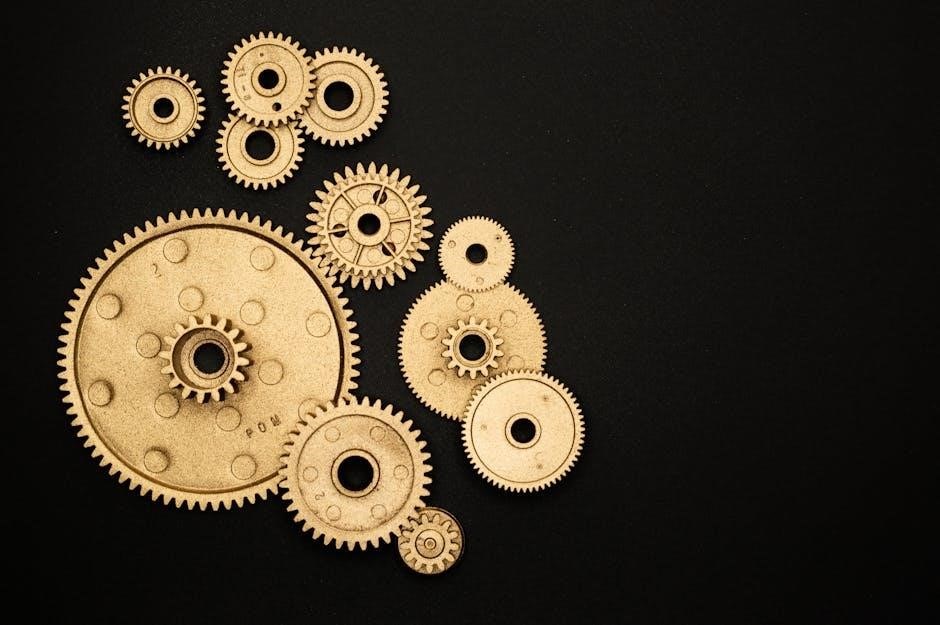
Symptoms and Diagnosis
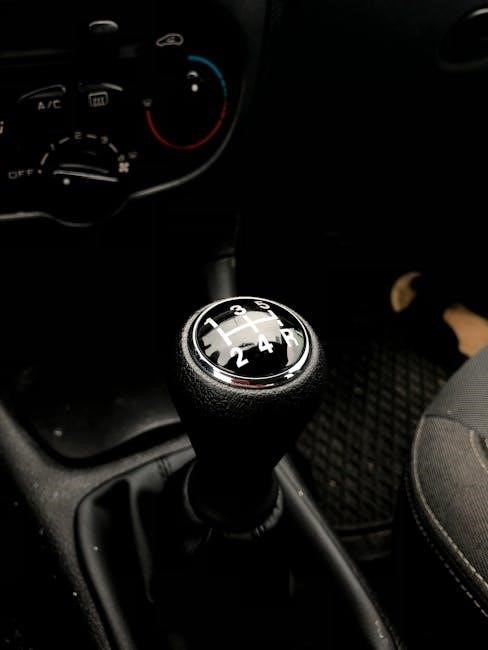
Recognizing symptoms like difficulty shifting gears, grinding noises, or the transmission feeling stuck is crucial for early diagnosis․ These signs often indicate underlying issues that need immediate attention․
Recognizing the Signs of a Stuck Gear
Identifying the symptoms of a stuck gear is essential for addressing the issue promptly․ Common indicators include difficulty shifting gears, a grinding or clunking noise when attempting to shift, and the gear shifter feeling rigid or unresponsive․ In some cases, the vehicle may refuse to move even when the clutch is fully depressed, or it might unexpectedly pop out of gear while driving․ Additionally, unusual vibrations or resistance when shifting can signal a problem․ These signs often point to issues such as a faulty clutch mechanism, worn synchronizers, or damage to the shift linkage․ Early recognition of these symptoms can prevent further damage to the transmission system․
How to Diagnose the Issue
Diagnosing a stuck gear in a manual transmission requires a systematic approach․ Start by checking the basics, such as ensuring the clutch pedal is functioning properly and the gear shifter moves smoothly․ Next, test the clutch by shifting gears with the engine off to determine if the issue persists․ If the gears still feel stuck, inspect the shift linkage for any visible damage or wear․ Additionally, check the hydraulic system for leaks or low fluid levels, as this can prevent the clutch from disengaging fully․ Finally, examine the synchronizers and gear engagement mechanism for worn or damaged components․ By methodically eliminating potential causes, you can pinpoint the root of the problem and determine the appropriate repair․
Common Misdiagnoses to Avoid
One common misdiagnosis is attributing a stuck gear to a faulty clutch when the actual issue lies with worn synchronizers or the shift linkage․ Another mistake is assuming the problem is with the transmission itself when it could be a simpler fix, such as adjusting the clutch pedal or replacing the hydraulic fluid․ Some drivers may also incorrectly believe that a stuck gear is due to high mileage, when in fact, it could be caused by improper shifting techniques or lack of maintenance․ Avoid jumping to conclusions and ensure a thorough inspection of all components before making repairs․
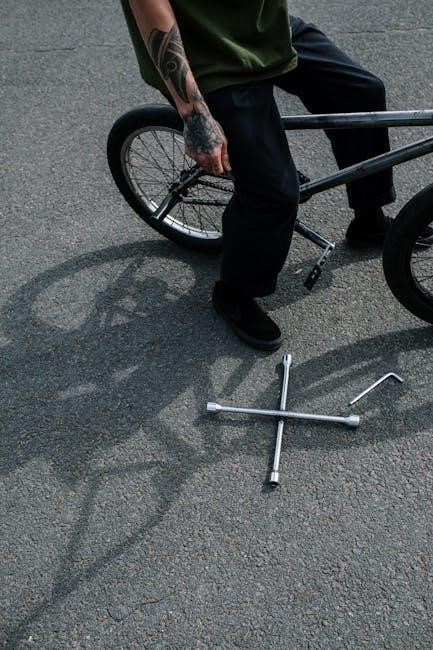
Practical Solutions and Fixes
Check the clutch mechanism, hydraulic system, and shift linkage for malfunctions․ Ensure proper shifting techniques and consider professional assistance if issues persist after basic troubleshooting․
Emergency Steps to Take When Stuck in Gear
If your manual transmission becomes stuck in gear, remain calm and follow these steps․ First, ensure your safety by moving to a safe location away from traffic․ Engage the parking brake and turn off the engine․ Check the clutch pedal—it should fully disengage․ If shifting remains difficult, try shifting into neutral and restarting the engine․ Gently test the gearshift to see if it moves freely․ If the issue persists, avoid forcing the gears, as this can cause further damage․ Consider towing the vehicle to a mechanic to prevent additional harm․ Remember, improper handling can exacerbate the problem, so prioritize caution and professional assistance․
DIY Repair Options for Minor Issues
For minor issues causing a stuck gear, DIY repairs can be effective if approached carefully․ Start by ensuring the clutch pedal is fully disengaged and the vehicle is in neutral․ If the problem is due to air in the hydraulic system, bleeding the clutch master and slave cylinders may resolve it․ Inspect the shift linkage for loose connections or misalignment and tighten or adjust as needed․ Check for worn or damaged components like the clutch throwout bearing or synchronizers, which may require replacement․ However, if the issue persists after these steps, it’s crucial to avoid further attempts and seek professional assistance to prevent more severe damage․ Always prioritize safety and avoid forcing gears, as this can exacerbate the problem․
When to Seek Professional Help
If DIY methods fail to resolve the stuck gear issue, it’s crucial to seek professional help․ Contact a certified mechanic immediately if the problem persists after basic troubleshooting steps like bleeding the hydraulic system or checking the shift linkage․ Severe cases, such as internal transmission damage or faulty synchronizers, require specialized tools and expertise․ Avoid attempting complex repairs without proper knowledge, as this can lead to further damage and higher repair costs․ A professional will diagnose the root cause accurately and ensure the transmission is repaired or replaced safely and efficiently․ Remember, delaying professional assistance can result in more severe and costly issues down the road, so don’t hesitate to seek expert help when needed․
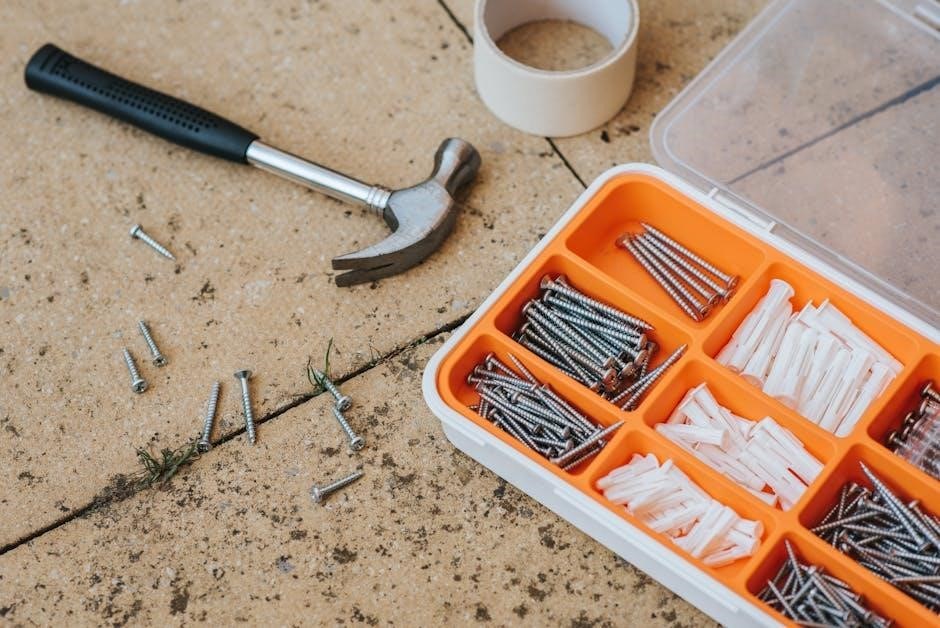
Prevention and Maintenance Tips
Regular maintenance, fluid checks, and proper shifting techniques help prevent gears from getting stuck in manual transmissions and ensure smooth performance and longevity․
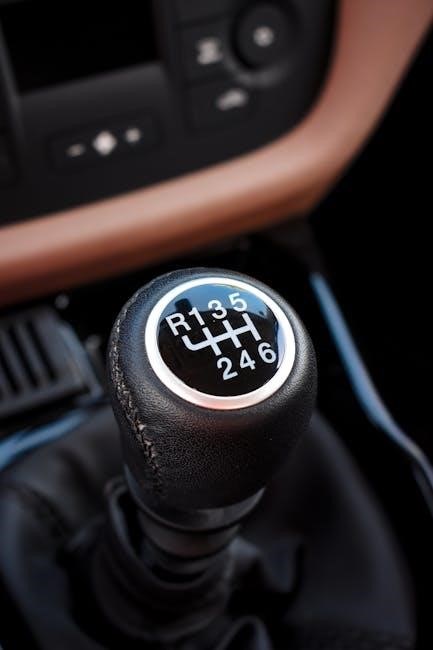
Regular Maintenance to Avoid Gear Problems
Regular maintenance is key to preventing gears from getting stuck in a manual transmission․ Ensure the transmission fluid is clean and at the recommended level, as low or dirty fluid can cause friction and wear on components․ Inspect and replace the clutch and synchronizers if worn, as these parts are crucial for smooth gear shifts․ Additionally, check the shift linkage and hydraulic system for any leaks or damage․ Proper lubrication of moving parts and timely replacement of worn components can significantly reduce the risk of gears becoming stuck․ Consistent maintenance not only prolongs the life of the transmission but also enhances overall driving performance and safety․
Best Practices for Shifting Gears
To avoid gears getting stuck, adopt smooth and deliberate shifting habits․ Always press the clutch pedal fully down before shifting to ensure gears disengage properly․ Avoid “riding” the clutch, as this can cause unnecessary wear on the clutch and transmission components․ When downshifting, match your engine RPM to the gear you’re shifting into to reduce stress on the transmission․ Use a smooth, gradual motion when shifting, rather than forcing the gear into place․ Additionally, always shift into neutral when stopping for extended periods to relieve pressure on the transmission․ By practicing these techniques, you can significantly reduce the risk of gears becoming stuck and extend the lifespan of your manual transmission․
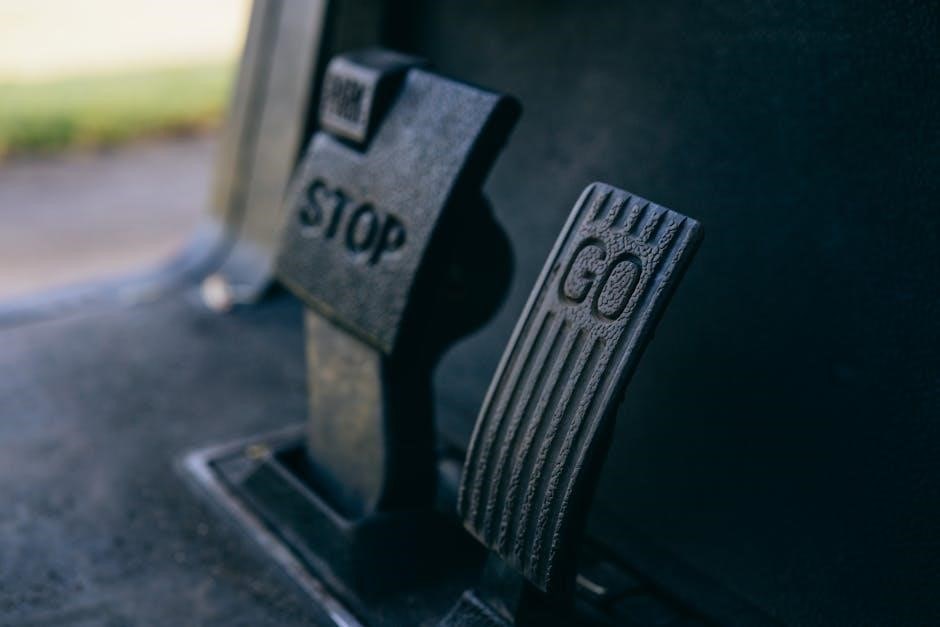
Transmission Repair and Replacement
Repairing or replacing a stuck manual transmission depends on the severity of the issue, with costs varying based on labor and parts․ Replacement is often necessary for severe damage․
Understanding the Cost of Repairs
The cost of repairing a manual transmission varies widely depending on the issue․ Minor problems, like replacing the clutch master cylinder, might cost between $200 to $500․ However, major issues such as damaged synchronizers or gear teeth can escalate costs to $1,000 or more․ If the transmission requires a complete rebuild, prices can range from $1,500 to $3,000, depending on the make and model of the vehicle․ In severe cases where the transmission is beyond repair, replacement with a new or used unit can cost between $2,000 to $4,000 or more, including labor fees․ Regular maintenance can help prevent these costly repairs by identifying issues early․
Deciding Between Repair and Replacement
Deciding whether to repair or replace a manual transmission depends on the severity of the issue and the vehicle’s overall condition․ If the problem is isolated, such as a faulty clutch or worn synchronizers, a repair is often cost-effective and can extend the transmission’s life․ However, if the damage is extensive, like cracked gear teeth or a failed bearing, replacement may be the only viable option․ Additionally, the vehicle’s age and mileage play a role․ For older cars with high mileage, replacing the transmission might be more economical in the long run․ Consulting a professional mechanic is crucial to make an informed decision based on a thorough inspection and cost comparison․
Addressing a stuck gear in a manual transmission requires understanding the root cause, adopting proper driving habits, and maintaining regular upkeep to prevent future issues and ensure smooth operation․
Final Thoughts on Managing a Stuck Gear
Managing a stuck gear in a manual transmission requires patience, quick thinking, and a thorough understanding of the underlying causes․ Whether it’s a faulty clutch, worn synchronizers, or improper shifting techniques, addressing the issue promptly is crucial to avoid further damage․ Regular maintenance, such as checking hydraulic systems and shift linkages, can prevent many problems from arising․ Additionally, adopting smooth shifting habits and avoiding aggressive driving can significantly reduce the risk of gears getting stuck․ If the problem persists despite DIY efforts, consulting a professional mechanic is essential to ensure a proper fix and maintain the longevity of your transmission․
Importance of Proper Driving Habits
Proper driving habits are essential for maintaining smooth operation of a manual transmission and preventing gears from getting stuck․ Consistently using the clutch fully and avoiding “riding” the clutch can reduce wear on components like the clutch mechanism and synchronizers․ Smooth acceleration and deliberate shifting, especially when matching RPMs during downshifts, can minimize stress on the transmission․ Aggressive driving, rapid shifting, or poor clutch control often lead to issues like stuck gears․ By adopting these good practices, drivers can extend the lifespan of their transmission and ensure reliable performance․ Proper habits not only enhance driving safety but also reduce the need for costly repairs down the road․

Additional Resources
Explore recommended tools like pressure bleeding kits and gear lubricants․ Check out suggested reading, including transmission repair guides and detailed manuals for further learning and troubleshooting․
Recommended Tools for Transmission Maintenance
Essential tools for manual transmission maintenance include a socket set, torque wrench, and gear lubricant․ A clutch alignment tool and seal installer are crucial for clutch repairs․ Pressure bleeding kits help diagnose hydraulic issues, while a transmission jack simplifies gear inspections․ Don’t forget a drain pan and cleaning brushes for fluid changes․ For complex repairs, consider a dial indicator and bearing puller․ Always keep a multimeter handy for electrical diagnostics․ Lastly, a detailed service manual specific to your vehicle is indispensable for guided repairs․ These tools will help you tackle common issues effectively and ensure your transmission runs smoothly․
Suggested Reading for Further Learning
For a deeper understanding of manual transmission mechanics and troubleshooting, explore resources like “Manual Transmission Repair and Rebuilding” by Haynes․ Online forums such as Reddit’s r/AskMechanics offer real-world insights from experienced drivers and mechanics․ Websites like Autozone and O’Reilly Auto Parts provide detailed guides on transmission maintenance․ YouTube channels specializing in car repairs, such as ChrisFix, offer hands-on tutorials for DIY fixes․ Additionally, consult your vehicle’s service manual for model-specific advice․ These resources will help you identify common issues, understand repair costs, and master proper shifting techniques to prevent problems like gears getting stuck․
